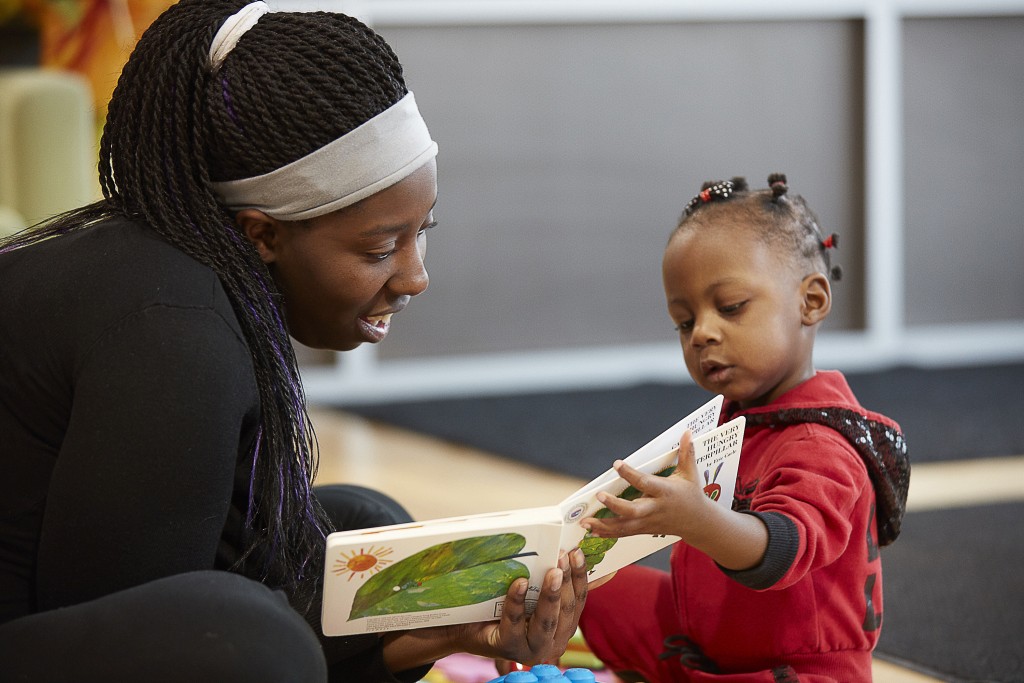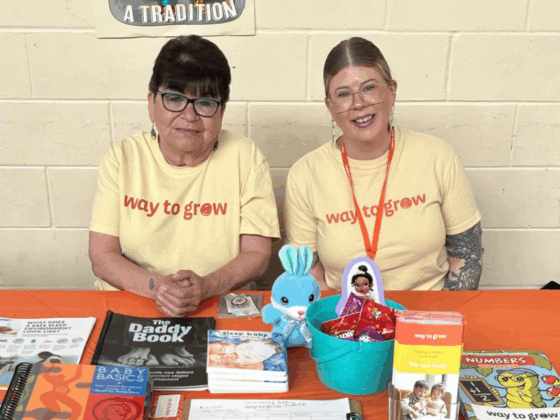Did you know making faces and smiling at your baby, responding to gestures, or playing “peek-a-boo” during the first critical years of life, has a profound effect on your baby’s overall growth, brain development, and educational achievement? Your playful interactions, which may seem insignificant to you, actually are helping to develop the building blocks for your baby’s brain. This ultimately forms the neurological connections that establish the cognitive and emotional skills children need later in life.
Back-and-forth play with your baby is called a “serve” and “return.” Your baby “serves” by babbling or making a gesture. You “return” by talking to your baby and smiling, or pointing to a specific object and saying its name.
Here’s how “serve” and “return” works in the development of your baby’s language: Your baby babbles or gestures and you respond by saying, “momma” or “dadda.” Each time you repeat this action, your baby’s brain associates a sound with a respective object. As your baby’s level of cognition develops, your “serve” and “return” interplay becomes more deliberate. For example, your baby says “momma” or “dadda” and reaches for you. You respond by smiling, picking up your baby and saying, “I’m momma” or “I’m dadda.” Each stage of language acquisition builds upon the previous stage. In the preschool or kindergarten classroom, this similar interplay with teachers helps children associate sounds with the letters of the alphabet and the formation words and sentences.
This back-and-forth interplay not only nurtures language development, it also teaches your child how to engage in social interactions, fosters positive relationships with others, and encourages your child to recall experiences and associate sounds and objects – all are essential to your child’s development.
Consider these steps when you use the “serve” and “return” technique during your play with your child.
Be attentive to your child’s “serve”
Is your child looking or pointing at something? Making a sound or facial expression? Moving their arms and legs? Each of these actions is a “serve.” The key is to pay attention to what your child is focused on. Look for small opportunities throughout the day to engage with your child, such as when you’re dressing them or waiting in line at the store.
Why is observing your child’s actions important in play? By noticing serves, you’ll learn a lot about their abilities, interests, and needs. You’ll also strengthen your parent-child bond by noticing these serves.
Support and encourage your child by returning the “serve”
After your child “serves” to you, you can encourage them by offering comfort with a hug and gentle words, or by simply acknowledging your child. These acknowledgements could include facial expressions or sounds, a smile to let your child know you see the same thing, or picking up the object your child points to and giving it to them.
Responding to your child is important. By showing interest, encouraging them, and supporting their exploration, you reward their curiosity. If you do not return your child’s serve, you may cause undue stress and frustration. Returning serves lets them know you’ve understood their thoughts and feelings.
Name the object
When you return your child’s “serve” by naming the object, you are making important connections in her brain, even before she is able to speak or understand your words. You can name anything – a person, thing, action, or feeling. Naming is important. When you name what your child is focused on, you help them understand the world around them and what to expect. Naming also gives your child words to use and lets them know you care.
Create a back-and-forth interaction … and wait for your child
Every time you return a serve, give your child a chance to respond. Taking turns can be quick or may continue, going back and forth several times. It’s important that you wait for your child. Children need time to form their responses, especially when they are learning new things.
Why is waiting important? Taking turns helps children learn self-control and how to get along with others. By waiting, you give your child time to develop ideas and build confidence and independence. Waiting also helps you understand their needs more clearly.
Share your child’s focus
Children signal when they’re done or ready to move on to a new activity. Your child might let go of one toy and pick up another, turn away to look at something, or walk away and say, “All done!” When you share your child’s focus, you’ll notice when they are ready to end one activity and begin another. When you can find moments for your child to take the lead, you support them as they explores the world, making more “serve” and “return” interactions possible.
Resources
Center on the Developing Child at Harvard University. 2010. Three Core Concepts in Early Development. http://developingchild.harvard.edu/resources/three-core-concepts-in-early-development/Cambridge, MA: Center on the Developing Child at Harvard University.
Center on the Developing Child at Harvard University. 2011. Five Steps for Brain-Building Serve and Return. https://developingchild.harvard.edu/resources/5-steps-for-brain-building-serve-and-return/Cambridge, MA: Center on the Developing Child at Harvard University.
The Permanent Fund for Vermont’s Children. 2014. Let’s Grow Kids Campaign: Focus on the First Years. “Serve” and “Return” for Strong Brain Connections.http://www.letsgrowkids.org/blog/serve-return-strong-brain-connections. Middlebury, VT: Vermont Community Foundation.





